Carpet damage is an issue that many homeowners and property managers encounter, with a variety of types to watch out for. From unsightly stains to wear and tear, understanding the different kinds of carpet damage can help in taking prompt and appropriate measures to maintain the appearance and longevity of your flooring.
In this section, we’ll delve into the most common forms of carpet damage, explaining their causes and outlining strategies for prevention and repair. Whether you’re dealing with the aftermath of a spill or the general degradation over time, being informed can empower you to keep your carpets in pristine condition.
Carpet damage is an inevitable aspect of home maintenance, with day-to-day activities invariably taking their toll on even the highest quality carpets.
Foot traffic, pets, and accidental spills contribute to a gradual decline in a carpet’s appearance and integrity. This persistent issue is prevalent in both residential and commercial settings, suggesting that periodic damage is unavoidable.
Education on preventative care and prompt intervention can significantly mitigate the impact, but some level of wear or occasional mishaps should be anticipated over the lifespan of a carpet.
Common Types of Carpet Damage
1. Stains
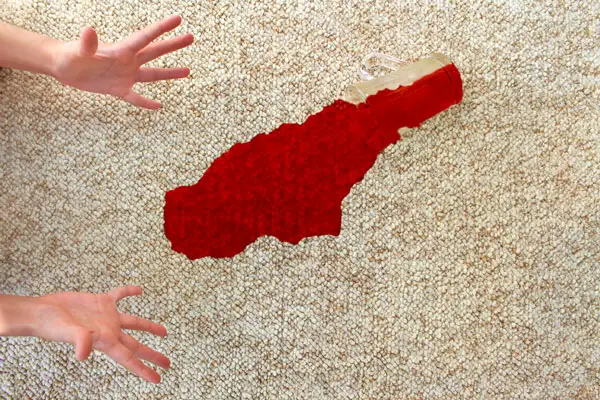
Food and Beverage Spills
Food and beverage spills are among the most frequent causes of carpet stains, posing a threat to the aesthetic value and hygiene of a room.
These spills, ranging from coffee and wine to sauces and greasy foods, can penetrate carpet fibers quickly, making immediate response crucial in preventing permanent damage.
The pigments in certain beverages and the oils in many foods are particularly notorious for leaving behind stubborn stains that not only mar the carpet’s appearance but can also attract additional dirt if left untreated.
Regular vacuuming and immediate spot cleaning with appropriate carpet cleaning solutions are the first lines of defense in maintaining a stain-free carpet. Additionally, in households prone to spills, considering stain-resistant carpet options or applying a protective sealant may offer long-term peace of mind.
Pet Accidents
Pet accidents such as urine, feces, and vomit are detrimental to carpet fibers and require swift and thorough cleaning to prevent lasting damage. The acidity and enzymes in pet waste can rapidly deteriorate the carpet, leading to unpleasant odors and permanent discoloration.
Immediate action is essential; blotting the area to remove as much of the accident as possible, followed by the application of an enzymatic cleaner specially formulated for pet stains, helps to break down the waste and neutralize odors.
For households with pets, it’s advisable to have a dedicated pet stain remover on hand and to consider investing in carpets with built-in technologies that resist pet stains and odors.
Ink and Paint Spills
Ink and paint spills present a particularly challenging situation due to their heavy pigmentation and potential to set quickly into carpet fibers. Immediate remediation is critical: blotting, not rubbing, is the key to lifting the spill and preventing it from spreading.
Specialized solutions, such as alcohol or paint remover, can be applied with care to tackle the stain, but it’s crucial to test these on an inconspicuous area first.
For extensive or dried spills, professional carpet cleaners or steam cleaning might be necessary to completely remove the discoloration and restore the carpet’s original look.
2. Wear and Tear
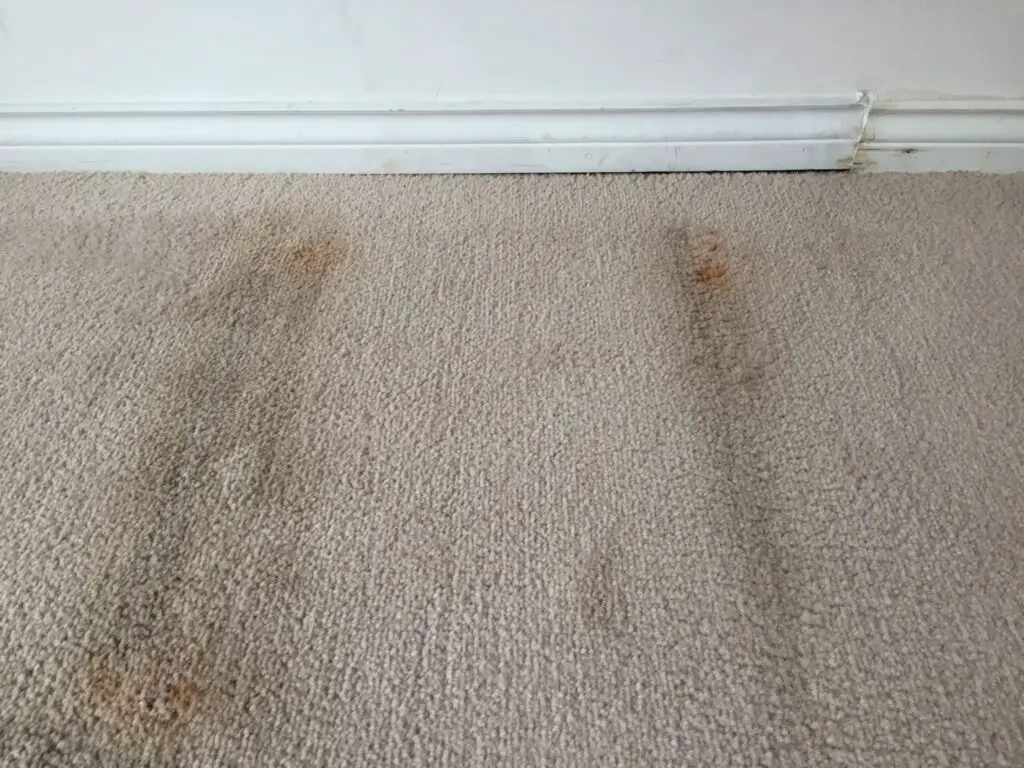
High Foot Traffic Areas
High foot traffic areas in homes and offices, such as hallways, entryways, and living rooms, are significantly susceptible to wear and tear. Over time, the constant tread of feet can cause the carpet fibers to break down, leading to a flattened, matted appearance and, in some cases, even thinning of the carpet itself.
To mitigate this, the use of area rugs or runners can be an effective measure, absorbing the brunt of the daily wear and offering an additional layer of protection for the underlying carpeting.
Regular rotation of these rugs can distribute the wear evenly, while frequent vacuuming can help maintain the resilience of the carpet fibers.
Furniture Indentations
Furniture that rests in one spot over time can leave behind unsightly indentations in the carpet, marring its uniformity and appeal. To alleviate these indentations, one can place ice cubes in the dents, and as they melt, the water encourages the carpet fibers to swell and return to their original stature.
Allow the area to dry, then gently lift the fibers with the edge of a coin or a spoon.
Additionally, rearranging furniture periodically will not only refresh the room’s layout but also prevent the formation of persistent impressions on the carpet.
Sunlight Exposure
Prolonged exposure to sunlight can lead to the fading of carpets, causing them to lose their vibrant color and appear aged and worn. This effect is especially noticeable in areas where sunlight streams through windows onto the carpet for extended periods.
To combat fading, consider utilizing window treatments like blinds, sheer drapes, or UV window films to reduce the intensity of sunlight entering the room.
Additionally, rearranging furniture and rugs regularly can help ensure that fading occurs uniformly, preventing noticeable spots of discoloration.
Regularly rotating the carpet if it’s not wall-to-wall can also distribute exposure evenly, maintaining a consistent look across the carpeted area.
3. Water Damage
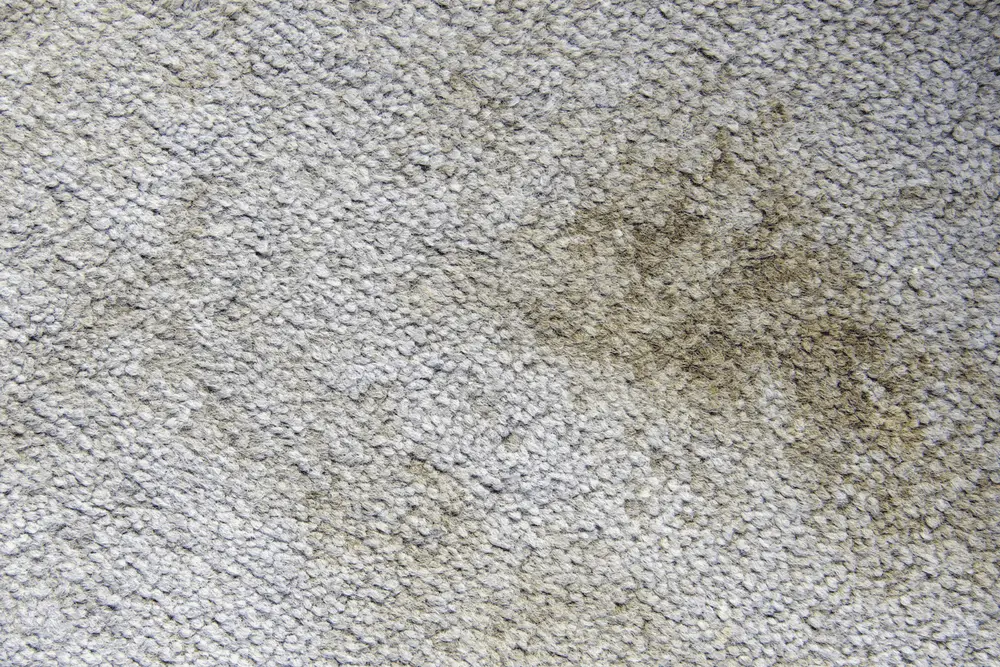
Flooding Incidents
Water damage from flooding can pose a significant threat to carpets, often leading to mold growth and unpleasant odors. It is crucial to address any water intrusion quickly, by extracting as much water as possible and employing air movers and dehumidifiers to accelerate the drying process.
In cases of severe flooding, professional cleaning or carpet replacement may become necessary to ensure a healthy indoor environment.
Regular inspection of potential water sources, such as pipes and appliances, can help mitigate the risk of flood damage in the home.
Plumbing Leaks
Leaking pipes are a less dramatic, but equally damaging, source of water harm to carpets. Undetected leaks can silently seep into carpet fibers, leading to subtle yet progressive deterioration.
Homeowners are advised to regularly inspect plumbing lines, especially in areas where pipes are typically hidden, such as under sinks and behind washing machines.
It’s also wise to have a plumber conduct annual inspections as a preventive measure. Should a leak occur, it is imperative to quickly address the problem by shutting off the water and calling a professional to repair the affected plumbing.
Immediate attention not only preserves the integrity of the carpet but also prevents the onset of mold and damage to the subfloor.
Humidity and Mold Growth
In humid climates, carpets are especially vulnerable to mold growth, as the moist environment provides the perfect breeding ground for these unwanted organisms. Maintaining a stable indoor humidity level, ideally between 30% and 50%, is essential in preventing the development of mold within carpet fibers.
This can often be managed with the use of air conditioners during hotter months and dehumidifiers in damper conditions.
Regular deep cleaning of carpets, which includes drying them thoroughly, can also prevent mold spores from taking root.
Homeowners should be vigilant for the musty odors and discolored patches that signal mold presence, and consider professional cleaning services if they suspect mold has already begun to grow.
4. Burns

Cigarette Burns
Cigarette burns can leave permanent and unsightly marks on carpets, with the severity ranging from slight singeing to full-thickness damage. Prevention is key; thus, establishing a ‘no smoking’ policy within the home, especially in carpeted areas, is the most effective way to safeguard against such burns.
If an accident occurs, small burns might be trimmed away or repaired with a patch of matching carpet, but larger burns often require professional restoration or even carpet replacement to restore the area’s aesthetic appeal.
Heat Marks from Irons or Hair Styling Tools
Heat marks from irons or hair styling tools can also cause unsightly blemishes on carpet fibers. These tools, if left in direct contact with the carpet, can melt or singe the fibers, potentially leaving a mark that is difficult to remove.
To prevent such damage, it’s imperative to always use a protective barrier, like a heat-resistant mat, when using styling tools, and to never place hot irons directly on carpeted surfaces.
In the event of an accident, gently scraping away the charred fibers and fluffing the surrounding area may help minimize the appearance of the damage, though sometimes professional intervention may be necessary to properly repair the carpet.
Accidental Fires
Accidental fires represent one of the most severe threats to carpeting, carrying the potential to cause extensive damage that can extend beyond simple discoloration or marking. These fires can be sparked by a variety of sources, such as unattended candles, faulty electrical equipment, or even an ember from a fireplace.
Proactive safety measures, like ensuring smoke detectors are in working order and keeping open flames away from carpeted areas, are essential for prevention.
After a fire incident, it’s critical to assess the structural integrity of the carpet and the subflooring, as the damage can be more than just surface-level.
In these situations, seeking the assistance of fire restoration professionals is not only advisable but often necessary to guarantee a safe and thorough recovery of the affected area.
5. Rips and Tears
Pet Scratches and Chewing
Pets, while they are treasured members of the family, can inadvertently wreak havoc on carpeted floors. Scratching–a natural behavior for cats and dogs to sharpen their claws or express their boredom or stress can cause significant wear and tear on carpet fibers.
In addition, pets, especially during their teething phase or due to behavior issues, can chew on carpets, which may lead to pulled threads or even holes.
To mitigate these issues, providing pets with appropriate toys and scratch posts, coupled with regular nail trimmings, can significantly reduce the likelihood of carpet damage.
Snags from Sharp Objects or Heavy Furniture
Carpet snags are commonly caused by the inadvertent pulling of fibers due to sharp-edged objects, high heels, or even the legs of heavy furniture. This results in unsightly tufts or loops being drawn out, affecting the overall appearance and integrity of the carpet.
To prevent such occurrences, it’s advisable to use protective pads under furniture legs and to enforce a no-shoe policy in carpeted areas.
Moreover, immediate attention to any sharp splinters or edges that come into contact with the carpet can prevent minor snags from escalating into larger tears.
6. Matting and Crushing
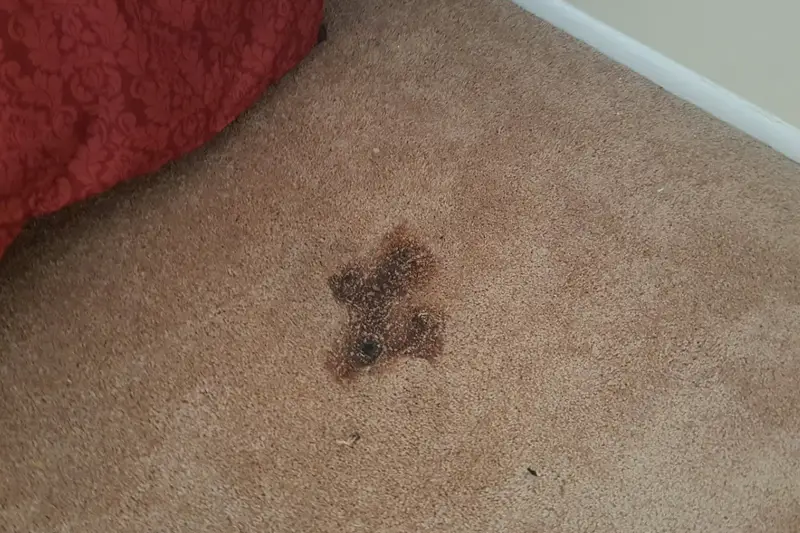
Compression of Fibers in High-traffic Areas
High-traffic areas are particularly susceptible to what is known as ‘compression’, where the carpet fibers are subjected to a high volume of foot traffic resulting in them being flattened.
This compression of fibers not only makes carpets look worn and dirty but can also reduce their lifespan. To counteract this, it is crucial to rotate furniture periodically to distribute wear more evenly and to use area rugs or runners in high-traffic zones.
Additionally, routine vacuuming with a brush-roll setting can help lift the fibers and mitigate some of the compression effects.
Indentations and Deformation
When heavy objects are placed on carpets for extended periods, the weight can cause permanent indentations and deformation of the carpet fibers. Over time, this pressure can crush the underlying carpet padding, rendering the area more susceptible to wear and tear.
Furthermore, these indentations can be difficult to remove, making the carpet appear aged and neglected.
To minimize these effects, it’s recommended to reposition heavy furniture periodically and to utilize wide-surface coasters or moveable bases under furniture legs to evenly distribute the weight and reduce the stress on the carpet fibers.
Regularly adjusting the placement of heavy items can also promote recovery of the compressed areas, helping to maintain the carpet’s structure and appearance.
Related Topics:
Conclusion
Understanding the various forms of carpet damage is crucial for maintaining the aesthetic and functional quality of your flooring. Stains, wear and tear, indentations, and water damage represent a spectrum of challenges that can deteriorate your carpet over time.
By staying informed about the causes and effects of carpet damage, as well as adopting a proactive posture towards maintenance and quick response to accidents, you can extend the life of your carpet and preserve its beauty.
Remember that prevention is always preferable to repair, and small measures, such as regular vacuuming, careful placement and rotation of furniture, and the use of protective mats, can make a significant difference.
Should damage occur, prompt and appropriate actions ranging from home remedies to professional services will ensure your carpets remain a cherished element of your home for years to come.
FAQs
What are some effective home remedies for removing carpet stains?
For many common carpet stains, a mixture of white vinegar and water can be an effective cleaner. For tougher stains, baking soda can be applied first, followed by the vinegar solution. Always remember to blot gently rather than rub, and test any solution on a small, inconspicuous area of the carpet first.
How often should I rotate my furniture to prevent carpet indentations?
It’s ideal to rotate furniture every six to twelve months to prevent permanent indentations and to ensure even wear on your carpet. This timeframe can vary depending on the weight of the furniture and the type of carpet you have.
Can professional carpet cleaning services extend the life of my carpet?
Yes, professional carpet cleaning services can greatly extend the life of your carpet. Professionals have access to high-grade equipment and specialized cleaning solutions that can remove deeply embedded dirt and debris that regular vacuuming cannot. It is recommended to have your carpets professionally cleaned every 12 to 18 months.

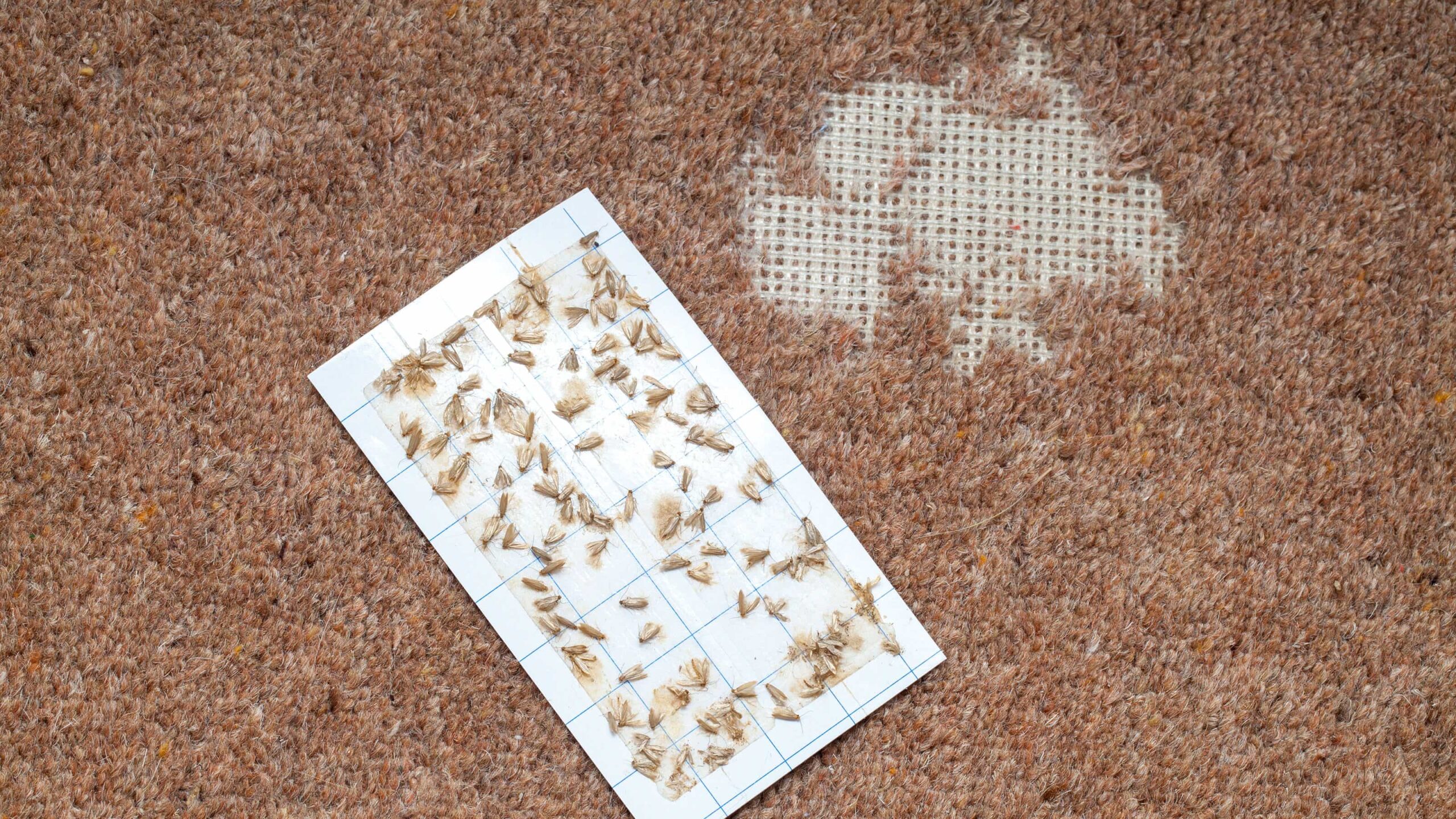
2 thoughts on “Understanding Common 6 Types Of Carpet Damage”